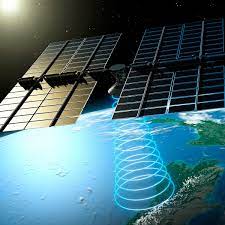UK innovators get £4.3m to develop space-based solar power

London: UK universities and tech companies are to receive £4.3m in government funding to develop space-based solar power.
The technology, which collects energy from the sun using satellite-mounted panels and beams it to Earth, had huge potential to boost the UK’s energy security, the UK’s energy security secretary, Grant Shapps, said.
Although the idea of building commercial power stations in space may sound far-fetched, the space industry has long been at the forefront of solar power development.
Indeed, the need to power satellites was a key driver in increasing the efficiency of solar panels that generate electricity for homes and businesses, said Dr Mamatha Maheshwarappa, the payload systems lead at the UK Space Agency.
Among the recipients of the funding from the government’s space-based solar power innovation competition are Cambridge University, which is developing ultra-lightweight solar panels that can withstand the high radiation levels encountered in space, and Queen Mary University of London, which is developing a wireless system to allow space-harvested solar power to be safely beamed to Earth.

This month, scientists at the California Institute of Technology in the US claimed to have successfully transmitted solar power to Earth from space for the first time, using a prototype spacecraft called Maple that was launched into orbit in January.
It uses an array of flexible lightweight transmitters to convert electricity into microwaves before beaming them to a specific location on Earth – in this case, a receiver on the roof of a building on Caltech’s campus in Pasadena – where they are converted back into electrical energy.
Assuming that the technology can be made to work on a large scale, there would be some significant advantages to space-based solar farms. Because there is no atmosphere in space, the sun’s light is undiluted, meaning each panel would be able to generate more energy compared with an equivalent panel on Earth. The solar energy would also be more predictable and continuous due to the absence of day-night cycles, cloud cover and seasonal variations in sunlight.
A UK government-commissioned independent study in 2021 found that space-based solar power could generate up to 10GW of electricity a year by 2050, a quarter of the UK’s current electricity demand. The Department for Energy Security and Net Zero has claimed it could create a multibillion-pound industry and up to 143,000 jobs across the country.
Announcing the funding at London Tech Week, Shapps said: “We’re taking a giant leap by backing the development of this exciting technology and putting the UK at the forefront of this rapidly emerging industry as it prepares for launch. By winning this new space race, we can transform the way we power our nation and provide cheaper, cleaner and more secure energy for generations to come.”
Privacy Notice: Newsletters may contain info about charities, online ads, and content funded by outside parties. For more information see our Privacy Policy. We use Google reCaptcha to protect our website and the Google Privacy Policy and Terms of Service apply.
Other projects to be awarded funding are: Satellite Applications Catapult Ltd in Didcot, for an experiment to test the electronic steering and beam quality of its space satellite antenna technology; MicroLink Devices UK Ltd in Port Talbot, to develop the next generation of lightweight, flexible solar panels; and the University of Bristol, to produce a simulation of solar space wireless power transfer capability and provide further evidence on the performance, safety and reliability of space-based solar.
Imperial College London and EDF Energy will also receive funding for studies to assess how electricity from space-based power stations could be integrated into the electricity grid alongside other low-carbon energy sources.
This article was amended on 13 June 2023. Due to an error in the information provided by the Department for Energy Security and Net Zero, an earlier version said that space-based solar power could generate up to 10GW of electricity a year by 2050, a quarter of the UK’s power needs; rather than a quarter of the UK’s current electricity demand by 2050.





